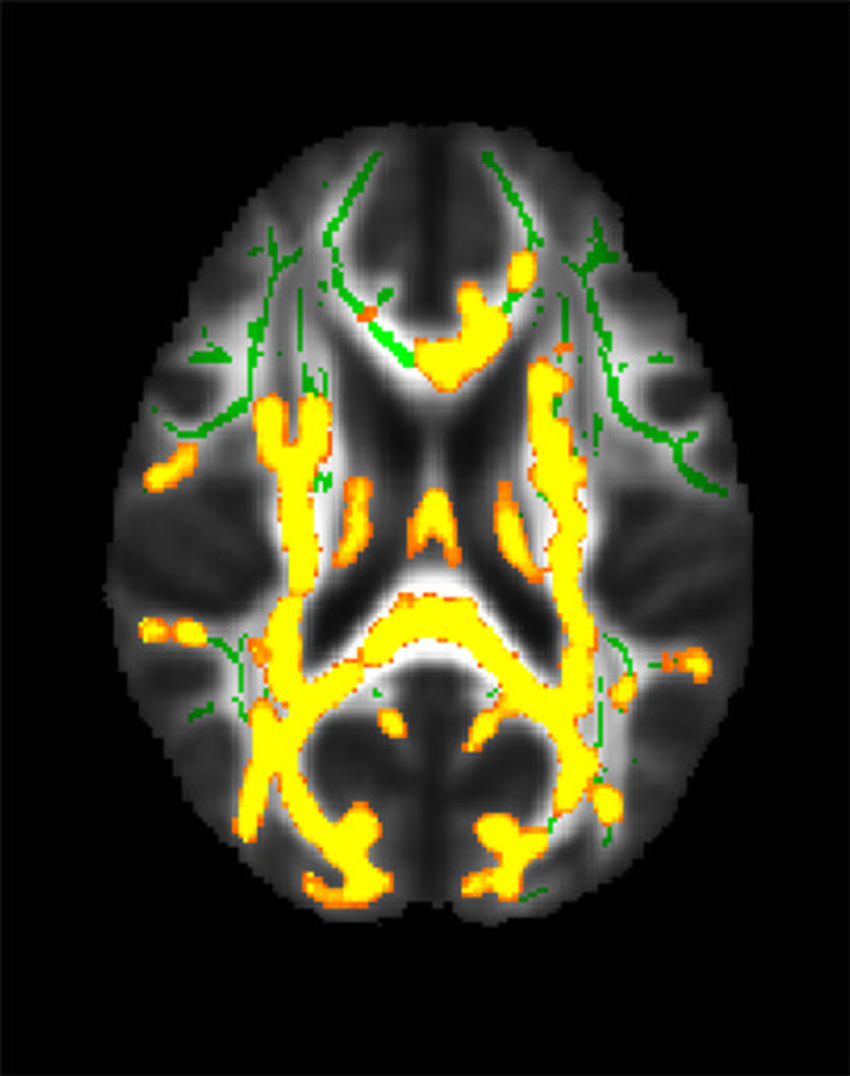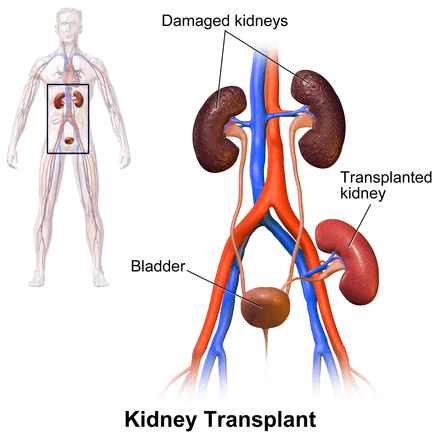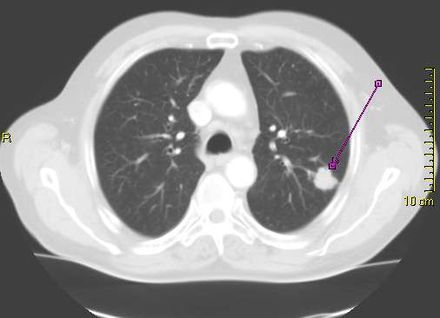Those who have never been to rehab before may wonder what it involves. The term conjures images of uniformed healthcare...
So, you've probably heard about ultrasonic tooth cleaners, right? They're like the new kids on the block in the world of dental hygiene. These gadgets use high-frequency sound waves – we're talking ultrasonic vibrations – to gently yet effectively break down and remove all sorts of nasties from your teeth: plaque, tartar, the works. The cool part? They do this without being harsh on your gums or enamel. This is key because, let’s face it, no one wants to trade in tartar for tooth sensitivity. It’s about getting your pearly whites clean without the downsides of traditional scraping tools that sometimes feel like a DIY project gone wrong in your mouth.
Why Ultrasonic Cleaners Could Be Your Teeth's New Best Friends

Now, why are these ultrasonic wonders good news for your chompers? Well, think about the usual suspects that dentists always warn us about – plaque and tartar. They're not just cosmetic issues; they're like the bad guys plotting against your oral health. Ultrasonic tooth cleaners step in as the superheroes, targeting these troublemakers with precision. This means less plaque and tartar, which in turn means a lower risk of gum disease and cavities. It’s a domino effect, really. Plus, these cleaners often reach where regular brushes can't, like those sneaky spots between your teeth and along your gum line. So, you’re not just cleaning; you're doing a deep clean every time.
(more…)
Alzheimer's - Dementia, Author Interviews, Weight Research / 28.11.2023
RSNA23: WashU Study Finds Link Between Hidden Belly Fat and Alzheimer’s Disease
MedicalResearch.com Interview with:
Mahsa Dolatshahi, M.D., M.P.H. Post-doctoral research fellow Mallinckrodt Institute of Radiology (MIR) Washington University School of Medicine St. Louis MedicalResearch.com: What is the background for this study? Response: Obesity at midlife is recognized as a risk factor for developing Alzheimer disease decades afterwards. However, body mass index on its own does not adequately represent the risks associated with obesity. In this study, we went beyond BMI and considered anatomical distribution of body fat, including the metabolically active visceral fat in the belly, and showed its association with Alzheimer pathology in the form of amyloid proteins. In addition, visceral fat along with obesity and insulin resistance were associated with thinning of brain cortex, as early as midlife. (more…)If you're setting your sights on giving your gums the royal treatment, you're on the right track. You want to buddy up with foods that are friends with your gums. Crunchy greens, like celery and spinach, are packed with gum-loving vitamins and minerals. Noshing on cheese and yogurt isn't just good for your bones; it also helps buffer the acids in your mouth, keeping your gums happy. Why's this a big deal? Well, your gums are the unsung heroes holding your teeth in place, and keeping them healthy is key to making sure your smile stays put for the long run.
Foods to Give a Wide Berth
Now, on to the munchies that your gums wish they could ghost. Sugary snacks and acidic eats like citrus and tomatoes might taste the bomb, but they're no pals to your gums. They invite bacteria to the party, and not the good kind. These guys get down to business, breaking down your gum tissue and causing inflammation. If you're fond of a smoke or a cheeky glass of wine, you might want to rethink that too. Anything that dries out your mouth is basically giving your gums a hard time. Skipping these is critical because, once gum disease checks in, it can be a hassle to show it the door.
Addiction is a part of modern life. Some people have addictions that are regarded as minor and not particularly dangerous. Caffeine addiction is widespread, for instance. Other individuals become addicted to something like drugs or alcohol, though.
Addiction therapy in Houston may be appropriate if you live there and feel your life is slipping out of your control. If you live elsewhere, you must look for inpatient or outpatient facilities close to you.
Some people compare addiction to an anchor that weighs you down. We will talk about why that is an apt comparison right now.
What Addiction Does to Your Spirit
Anchors are things that incapacitate you, and many people who have a habit that is getting out of control feel that weight every day. It impacts you in many ways, but the spiritual exhaustion an addict feels might be the worst thing that happens to them.
When you look at an addict, you might see what their addiction is doing to them physically, but what it is doing to them mentally and psychologically is often just as evident. They may slump as though they’re literally carrying something heavy on their shoulders.
This is because they often have to lie and hide their addiction or the extent of it from family members, friends, and coworkers. There’s no way that can be anything but exhausting.
(more…)
Aging, Author Interviews, Frailty, Infections / 18.11.2023
Study Finds Toxoplasmosis Infection Associated with Frailty
MedicalResearch.com Interview with:
Hira Mohyuddin, PGY-2
Psychiatry Residency Training Program
The George Washington University
MedicalResearch.com: What is the background for this study?
Response: Frailty has become increasingly significant as the global population grows older, as this syndrome is linked with a higher mortality and morbidity in aging. Causes contributing to frailty are poorly understood, but it seems that the role of inflammation is very likely.
While other chronic infections were shown to precipitate and perpetuate inflammation that contributes to the development of frailty, no prior study has previously focused on possible links between Toxoplasma gondii and geriatric frailty. Benefiting from a collaboration with Spanish and Portuguese researchers, we have now tested, for the first time to our knowledge, this possible association.
(more…)
Author Interviews, Brigham & Women's - Harvard, Gastrointestinal Disease, Obstructive Sleep Apnea, Technology / 18.11.2023
Brigham/MIT/WVU Scientists Develop Pill to Measure Vital Signs Without Blood Tests or Wires
MedicalResearch.com Interview with:
Giovanni Traverso MD PhD
Karl Van Tassel (1925) Career Development Professor
Department of Mechanical Engineering
Koch Institute of Integrative Cancer Research
Division of Gastroenterology
Brigham and Women’s Hospital
Harvard Medical School, Boston, MA, USA
MedicalResearch.com: What is the background for this study?
Response: I think its always important to acknowledge that this is a big team effort. We have the teams from MIT, Celero Systems, West Virgnia University (WVU) and Brigham and Women’s Hospital (BWH) all working together on this. For this study, Celero prototyped the devices that we tested in pre-clinical (Swine) models and in a first-in-human study with the team at WVU.
Our lab focuses on the development of ingestible devices for drug delivery and sensing and these have informed the development of these efforts as you can see.
MedicalResearch.com: What types of vital signs are measurable in this fashion?
Response: Heart rate and respiratory rate.
(more…)
Author Interviews, Cancer Research, Cost of Health Care, JAMA, Pharmacology / 17.11.2023
Study Finds Re-dispensing Unused Cancer Drugs Can Save Money and the Environment
MedicalResearch.com Interview with:
 Lisa-Marie Smale, PharmD
Lisa-Marie Smale, PharmD
PhD Candidate Clinical Pharmacy
Radboud University Medical Center
Department of Pharmacy
Nijmegen, the Netherlands MedicalResearch.com: What is the background for this study? Response: Cancer drugs are not always fully used by patients, while these drugs are mostly expensive and environmentally damaging, both in production and (waste) disposal. Therefore we investigated whether unused drugs of patients can be collected, verified of quality by a pharmacy, to be redispensed to other patients instead of being disposed of. We were interested whether such an approach ultimately leads to lower environmental impacts and costs. (more…)
 Lisa-Marie Smale, PharmD
Lisa-Marie Smale, PharmDPhD Candidate Clinical Pharmacy
Radboud University Medical Center
Department of Pharmacy
Nijmegen, the Netherlands MedicalResearch.com: What is the background for this study? Response: Cancer drugs are not always fully used by patients, while these drugs are mostly expensive and environmentally damaging, both in production and (waste) disposal. Therefore we investigated whether unused drugs of patients can be collected, verified of quality by a pharmacy, to be redispensed to other patients instead of being disposed of. We were interested whether such an approach ultimately leads to lower environmental impacts and costs. (more…)
 If you've been in a scrape and your noggin took a knock, playing it tough and shaking it off isn't the way to go. A traumatic brain injury (TBI), even one that seems no biggie, can be sneaky. At first, you might feel fine, but your brain's had a jolt, and it needs a look-over. Ignoring it? Bad move. That little headache or dizziness might be your brain's way of saying, "Hey, I'm not okay." Small signs like mood swings, sleep changes, or even just feeling "off" can be the early whispers of something bigger brewing. It's like ignoring a weird noise in your car's engine—let it go and you might just find yourself broken down on the highway of health.
If you've been in a scrape and your noggin took a knock, playing it tough and shaking it off isn't the way to go. A traumatic brain injury (TBI), even one that seems no biggie, can be sneaky. At first, you might feel fine, but your brain's had a jolt, and it needs a look-over. Ignoring it? Bad move. That little headache or dizziness might be your brain's way of saying, "Hey, I'm not okay." Small signs like mood swings, sleep changes, or even just feeling "off" can be the early whispers of something bigger brewing. It's like ignoring a weird noise in your car's engine—let it go and you might just find yourself broken down on the highway of health.The Domino Effect of Ignoring Symptoms
Let's talk about what happens if you shrug off those symptoms. A tiny injury can start a chain reaction. Before you know it, you could be dealing with big-time problems like memory issues, serious concentration hiccups, or even long-term disabilities. And here's the kicker: these troubles don't always show up on day one. They can sneak up on you, turning from "I'm fine" to "Why can't I remember my passwords?" in no time. Think about it—your brain runs the show, so even a small glitch can throw off the whole performance.
(more…)
Allergies, Author Interviews, Dermatology, University of Michigan / 16.11.2023
Food Allergy: Test Measuring Water Loss Through Skin (TEWL) May Predict Anaphylaxis
MedicalResearch.com Interview with:
Charles Schuler, MD
Assistant Professor
Allergy and Clinical Immunology &
Mary H. Weiser Food Allergy Center
University of Michigan
MedicalResearch.com: What is the background for this study?
Response: Anaphylaxis is a severe allergic reaction that may include a skin rash, nausea, vomiting, difficulty breathing, and shock. Food anaphylaxis sends 200,000 people to the emergency room annually in the United States. Oral food challenges are when a patient ingests increasing doses up to a full serving of the suspected food allergen under supervision of a medical provider, usually an allergist. These oral food challenges are the diagnostic standard for food allergy/anaphylaxis as skin and blood allergy tests have high false positive rates. Although a highly accurate test, patients often experience anaphylaxis during oral food challenges necessitating an epinephrine injection.
(more…)
Author Interviews, Dermatology, JAMA, Surgical Research / 16.11.2023
Reduced Recurrence of Pilonidal Cysts with Addition of Laser Hair Removal
MedicalResearch.com Interview with:
Peter C. Minneci, MD
Chair of Surgery at Nemours Children’s Health
Delaware Valley
MedicalResearch.com: What is the background for this study? Would you briefly explain the symptoms/course of pilonidal disease?
Response: Pilonidal disease is relatively common and affects up to 1% of the population starting in adolescence and up until young adulthood. Pilonidal disease occurs when cysts or sinuses form between the buttocks. It is believed to be an inflammatory reaction to hair or debris that gets caught in the crease of the buttocks. Risk factors for the condition include a sedentary lifestyle, hygiene and obesity.
Pilonidal disease can be intermittent or chronic and recurs about 33% of the time, with 80% of recurrences taking place within a year of initial treatment. These recurrences contribute to a high degree of psychosocial stress in patients, who often miss school or sports and may avoid social activities. Pilonidal cysts may become infected, in which case patients must take antibiotics or undergo surgery.
Standard treatment for pilonidal disease involves removal of hair with razors or creams, as well as recommendations such as keeping the area clean. In recent years, some practitioners have begun using laser epilation as an additional strategy to prevent recurrence by providing more durable hair removal. However, it’s important to point out that this is not covered by insurance. In addition, as a provider, I have found that my patients that do have the means to pay often don’t comply with the number of sessions needed to fully remove the hair due to many different factors including pain and discomfort during the procedure.
(more…)
AHA Journals, Author Interviews, Heart Disease, Kidney Disease, Obstructive Sleep Apnea, Sleep Disorders / 15.11.2023
AHA23: Unexpected Link Between Sleep Apnea and Cardiovascular Events in Kidney Disease Patients
MedicalResearch.com Interview with:
Lead Author: Rupak Desai, MBBS
Atlanta Veterans Affairs Medical Center
Independent Researcher, Atlanta, GA,
Presenter: Vamsikalyan Borra, MD
Resident Physician, Internal Medicine
University of Texas Rio Grande Valley, Weslaco, TX
MedicalResearch.com: What is the background for this study?
Response: The relationship between sleep apnea (OSA) and chronic kidney disease (CKD) is quite complex. OSA can cause hypoxia, activation of the sympathetic nervous system, and hypertension, all of which can have negative effects on kidney function. On the other hand, in patients with end-stage renal disease (ESRD), intensifying renal replacement therapy has shown some improvement in sleep apnea severity, suggesting a bi-directional relationship between the two conditions. While there are still uncertainties, recent studies have focused on understanding the interplay between OSA and CKD.
The role of CPAP therapy, a common treatment for OSA, in relation to CKD is not yet clear. Observational studies present findings regarding the impact of CPAPs on kidney function. However, researchers are actively investigating its cardiovascular benefits and its influence on the progression of CKD.
The objective of this study is to analyze the trends in composite cardiovascular events in hospital encounters among geriatric patients with CKD, comparing those with and without obstructive sleep apnea. Additionally, we are also investigating sex and racial disparities in trends of major adverse cardiovascular and cerebrovascular events (MACCE) among geriatric patients with obstructive sleep apnea (OSA). Furthermore, we are assessing the impact of continuous positive airway pressure (CPAP) treatment and dependence on MACCE outcomes in OSA patients
(more…)
Annals Internal Medicine, Author Interviews, Dermatology / 14.11.2023
Acupuncture Studied for Treatment of Chronic Hives
MedicalResearch.com Interview with:
Ying Li MD, PhD
Graduate School
Chengdu University of Traditional Chinese Medicine
Chengdu, China
MedicalResearch.com: What is the background for this study?
Response: Chronic spontaneous urticaria (CSU) is a prevalent dermatological condition affecting approximately 1% of the global population. It is characterized by persistent itching and the development of hives, significantly impairing patients' quality of life. More than 90% of patients with CSU require urgent medical treatment to relieve itching. However, few therapies are specifically designed to treat pruritus in The management of pruritus is one of the main goals in the treatment of chronic spontaneous urticaria .
Antihistamines are a common treatment of CSU, and current guidelines recommend second-generation antihistamines as first-line therapy.
However, nearly 40% of patients do not respond to second-generation antihistamines, even when the dose is increased 2- to 4-fold. Omalizumab as a second-line treatment is effective in controlling urticaria, but it is costly and is not reimbursed in many countries, limiting its use to most patients worldwide. Given the shortcomings of existing therapies for pruritus in CSU, novel therapeutic interventions or strategies are emerging.
Acupuncture, a traditional physical therapy with a rich historical background spanning over a millennium, has been regarded as an effective treatment for urticaria in China. However, previous randomized controlled trials investigating acupuncture's efficacy have been marred by methodological limitations, thereby undermining the credibility of the evidence. To address this gap, we conducted a multicenter randomized controlled trial to comprehensively evaluate the effectiveness of acupuncture in the management of CSU.
(more…)
Alcohol, Author Interviews, Stanford / 13.11.2023
Alcohol Use Disorder: Stanford Study Documents Brain Recovery With Abstinence
MedicalResearch.com Interview with:
Timothy C. Durazzo, PhD
Clinical Neuropsychologist and Research Scientist
Mental Illness Research and Education Clinical Centers
VA Palo Alto Health Care System
Professor, Department of Psychiatry and Behavioral Sciences
Stanford University School of Medicine
MedicalResearch.com: What is the background for this study?
-There are a limited number of studies investigating changes in human brain structure, in individuals with an alcohol use disorder, with longer term abstinence after treatment.
-Our study was the first to assess for change in cortical thickness over approximately 7 months of abstinence in those seeking treatment of alcohol use disorder.
-Cortical thickness in humans is genetically and phenotypically distinct from other brain structural measures such as cortical volume and surface area.
-Therefore, assessment of changes in cortical thickness with longer-term abstinence provides additional information on how human brain structure recovers with sobriety.
(more…)
Author Interviews, Dental Research, Pediatrics, USPSTF / 13.11.2023
USPSTF: Pediatric Oral Health Screening in Primary Care Evaluated
MedicalResearch.com Interview with:
Li Li, M.D., Ph.D., M.P.H.
The Walter M. Seward Professor and Chair of Family Medicine
University of Virginia (UVA) School of Medicine
Director of Population Health at UVA Health
Dr. Li joined the U.S. Preventive Services Task Force in January 2021.
MedicalResearch.com: What is the background for this study? What are the main findings?
Response: Oral health is an important part of everyone’s overall health and well-being. Recognizing this, the Task Force looked at whether primary care clinicians can play a role in complementing the work of dental professionals to prevent cavities and gum disease.
MedicalResearch.com: What are the main findings?
Response: Our review of the latest available evidence focused on the prevention of cavities for children who are 5 years old and older and do not have any signs or symptoms. After a thorough review, we found that there is not enough evidence to recommend for or against oral health screening and interventions for school-aged children in primary care settings.
(more…)
Author Interviews, Heart Disease, Stem Cells / 13.11.2023
AHA23: Successful Early Trial of Stem Cells Used To Re-Muscle Heart in Advanced Heart Failure
MedicalResearch.com Interview with:
Prof. Dr. Wolfram-Hubertus Zimmermann
Director, Institute of Pharmacology and Toxicology
University Medical Center Göttingen
Georg-August University
Göttingen, Germany
MedicalResearch.com: What is the background for this study?
Response: Involvement in research and development in the field of tissue engineered heart repair since 25+ years.
Bench-to-bed translation of our research.
MedicalResearch.com: How are the stem cell obtained?
Response: We make use of induced pluripotent stem cells as starting material to obtain heart muscle cells for the engineering of Engineered Human Myocardium (EHM) and its use as Biological Ventricular Assist Tissue (BioVAT).
(more…)
Author Interviews, Kidney Disease, Transplantation / 09.11.2023
Kidney Transplant and Living Kidney Donation: Multicomponent Program to Improve Patient Access
MedicalResearch.com Interview with:
Collective responses from study authors:
MedicalResearch.com: What is the background for this study?
- Patients with advanced chronic kidney disease (CKD) have the best chance for a longer and healthier life if they receive a kidney transplant.
- However, due to many barriers, many eligible patients today will never receive a kidney transplant.
- Advanced CKD care is provided by 26 chronic kidney disease (CKD) programs managed by a government funded provincial renal agency (the Ontario Renal Network)
- Together these 26 programs treat ~ 24,000 patients each year
- This care is provided by over 3400 nurses and 230 nephrologists
- To patients approaching the need for dialysis and those receiving dialysis
- Approximately half are transplant eligible
- ~ 600 kidney transplants done in Ontario each year across 6 transplant centres
- with approximately.30% of kidneys coming from living donors
Author Interviews, Inflammation, Nutrition, Red Meat / 09.11.2023
STUDY FAILS TO FIND EVIDENCE THAT RED MEAT IS LINKED TO INFLAMMATION
MedicalResearch.com Interview with:
Dr. Alexis C. Wood
United States Department of Agriculture (USDA)/ARS
Children’s Nutrition Research Center
Baylor College of Medicine, TX
MedicalResearch.com: What is the background for this study?
Response: We know (we think!) that what we eat has a big influence on our health. However, discovering which foods influence our health, and how, is highly challenging. Research investigating this topic should be seen as an on-going process as new results and new study methods emerge, and as the food environment shifts.
Red meat is often considered a food that should be minimized in diets designed to support good health. This may seem surprising as red meat is a good source of protein and many other nutrients, but the advice to limit red meat intake is based on several large-scale studies showing associations between red meat consumption and the development of conditions such as type 2 diabetes, and other cardiovascular disease risk related factors. However, newer research, with different designs or approaches, has struggled to conclusively support this association; for example, in studies where the amount of red meat in people’s diet is manipulated, we do not see the expected increases in risk. Other studies have suggested that any associations between red meat intake and chronic disease may reflect confounding effects by adiposity – that is, the increased risk of disease really reflects the increased risk associated with a higher BMI.
(more…)
“There is probably no other medical condition which is treated in so many different ways and by such a variety of practitioners as back pain.” – John Sarno. Chronic back pain is a pervasive and debilitating issue that affects millions of people around the globe. For many, it goes beyond just discomfort to crippling suffering on both physical and mental levels that can make life difficult in general. Though progress has been slow, there are some new discussions coming out of recent research findings that offer hope for those who have found themselves battling this type of chronic pain.
The BEST Trial's Hopeful Message for Back Pain Patients
 Chronic back pain troubles many people. Often, it seems as if there is hardly any relief available to them, but there is new research going on that promises better results - The BEST trial. Led by Dr Daniel Clauw from the University of Michigan, along with a team specializing in pain treatment, they aim to find effective strategies that can be custom-fit for distinct individuals suffering from back pain. Around 800 patients will participate in this process. BEST stands for Biomarkers for Evaluating Spine Treatments. It's part of the BACPAC Research Program and is supported by the National Institute of Arthritis and Musculoskeletal Skin Diseases through the NIH HEAL Initiative. The goal here is simple yet profound: Understand which treatment or combination works best depending on unique traits specific to patients. This bird’s eye perspective could benefit all chronic low back-pain sufferers across America. Their findings might link specific characteristics (known as biomarkers) with different treatments’ effectiveness levels thus helping doctors help patients better. If everything goes according to plan, every chronic lower-back pain patient may receive their tailored treatment, setting them up towards a recovery road.
Chronic back pain troubles many people. Often, it seems as if there is hardly any relief available to them, but there is new research going on that promises better results - The BEST trial. Led by Dr Daniel Clauw from the University of Michigan, along with a team specializing in pain treatment, they aim to find effective strategies that can be custom-fit for distinct individuals suffering from back pain. Around 800 patients will participate in this process. BEST stands for Biomarkers for Evaluating Spine Treatments. It's part of the BACPAC Research Program and is supported by the National Institute of Arthritis and Musculoskeletal Skin Diseases through the NIH HEAL Initiative. The goal here is simple yet profound: Understand which treatment or combination works best depending on unique traits specific to patients. This bird’s eye perspective could benefit all chronic low back-pain sufferers across America. Their findings might link specific characteristics (known as biomarkers) with different treatments’ effectiveness levels thus helping doctors help patients better. If everything goes according to plan, every chronic lower-back pain patient may receive their tailored treatment, setting them up towards a recovery road.
Alzheimer's - Dementia, Author Interviews, Genetic Research, JAMA, Stanford / 07.11.2023
Alzheimer’s Disease: APOE Status Must Be Interpreted in Light of Race, Ethnicity, Ancestry and Sex
MedicalResearch.com Interview with:
Michael E. Belloy, PhD
Department of Neurology and Neurological Sciences
Stanford University, Stanford, California
MedicalResearch.com: What is the background for this study?
Response: Apolipoprotein E (APOE)*2 and APOE*4 are, respectively, the strongest protective and risk-increasing, genetic variants for late-onset Alzheimer disease. As such, one’s APOE genotype is highly relevant towards clinical trial design and Alzheimer’s disease research. However, most insights so far are focused on the associations of these APOE genotypes with Alzheimer’s disease risk in non-Hispanic white individuals.
One important aspect of our work is that we really increased sample sizes for non-Hispanic Black, Hispanic, and East Asian individuals, so that we now have better understanding of the associations of APOE genotypes with Alzheimer’s disease risk in these groups. In complement, we also did the largest investigation to date on the role of ancestry on the associations of APOE genotypes with Alzheimer’s disease risk. The scale of our study was thus a critical factor in generating novel insights.
(more…)
Author Interviews, Environmental Risks, JAMA, McGill, Mental Health Research / 06.11.2023
McGill University Analysis Finds Early Life Adversity May Predispose to Exaggerated Emotional Responses as Adults
MedicalResearch.com Interview with:
Niki Hosseini-Kamkar PhD
Postdoc, McGill University
MedicalResearch.com: What is the background for this study?
Response: Our primary question was: Do adults with a history of childhood trauma have altered
brain responses to psychological challenges? Previous evidence indicated that this can
occur in laboratory animals, but it has been unclear whether it occurs in humans.
(more…)
Author Interviews, Heart Disease / 06.11.2023
Updated Classification of Acute MI Based on Stages of Tissue Injury Severity
MedicalResearch.com Interview with:
Prakriti Gaba, MD
Cardiovascular Medicine Fellow
Brigham and Women's Hospital
Deepak L. Bhatt MD MPH
Director of Mount Sinai Fuster Heart Hospital
Dr. Valentin Fuster Professor of Cardiovascular Medicine
Icahn School of Medicine at Mount Sinai
MedicalResearch.com: What is the background for this study?
Response: Accurate classification of acute myocardial infarction is instrumental for the appropriate diagnosis and effective management of patients suffering from this widely prevalent cardiovascular condition.
In the past, there have been a variety of clinical scores published to advise clinicians on the best classifications schemes for patients with acute MI. These have included the Thrombolysis in Myocardial Infarction (TIMI) risk score, the HEART score, and the Killip classification. The strength of these traditional scores includes their practicality, as they can be implemented at the bedside to rapidly assist with prognostication. Nonetheless, as technologic advancements have made imaging and tissue identification more accessible, national and international committees are looking to revise traditional classification schemes of acute MI with novel ones leveraging multimodal approaches.
(more…)
When we don’t feel well physically, we go to the doctor. They ask about our symptoms and check our vital...
Author Interviews, Eli Lilly, Gastrointestinal Disease / 03.11.2023
Crohn’s Disease: Lilly’s Mirikizumab Has Potential to Achieve Remission in Phase 3 Study
MedicalResearch.com Interview with:
Lotus Mallbris, M.D., Ph.D.,
Senior Vice President of Immunology Development
Eli Lilly
MedicalResearch.com: Would you briefly describe the condition of Crohn's disease and who is most susceptible to this disease?
Response: Crohn's disease is a form of inflammatory bowel disease (IBD) that can cause systemic inflammation manifested as abdominal pain, diarrhea, fever and weight loss. It can lead to intestinal obstruction, fibrosis and other complications.
Approximately 900,000 patients in the U.S. and 1 million patients in Europe are currently suffering from Crohn’s disease, and 70% of those have moderate to severe disease. Although the majority of patients are started on conventional therapy such as corticosteroids and immunomodulators, many will unfortunately progress to having moderate to severe disease.
Furthermore, current therapies to treat Crohn’s disease often fail to achieve remission for a majority of patients, and of the patients who do achieve remission, a substantial proportion lose it within the first year.
(more…)
Author Interviews, Eli Lilly, Gastrointestinal Disease, NEJM / 02.11.2023
Ulcerative Colitis: FDA Approves Mirikizumab After Study Finds Long Lasting Response
MedicalResearch.com Interview with:
Marla C. Dubinsky, MD
Professor of Pediatrics and Medicine
Icahn School of Medicine at Mount Sinai
Co- director, Susan and Leonard Feinstein IBD Clinical Center
Mount Sinai Health System
MedicalResearch.com: What is the background for this study? Would you briefly describe the condition of UC?
Response: Lucent 1 and Lucent 2 were the induction and maintenance registration trials studying the efficacy and safety of mirikizumab in patients 18 years and older with moderate to severely active ulcerative colitis. Mirikizumab is a monoclonal antibody targeting the p19 subunit of IL23. Lucent-3 is the open label extension arm for those meeting inclusion criteria after completing Lucent 2. This study evaluated the long term efficacy and safety of mirikizumab in patients with ulcerative colitis who completed a total of 104 weeks of active mirikizumab treatment.
Ulcerative colitis is a chronic incurable inflammatory condition of colon. Common symptoms include diarrhea, blood in the stool, abdominal cramping and bowel urgency. Bowel urgency is one of the most burdensome symptoms that a patient with you could experience.
(more…)
Author Interviews, Cognitive Issues, Nature, Pediatrics / 01.11.2023
Study Charts How Executive Brain Functioning Matures Through Adolescence
MedicalResearch.com Interview with:
Brenden Tervo-Clemmens, Ph.D.
Assistant Professor
Department of Psychiatry & Behavioral Sciences
Masonic Institute for the Developing Brain
Scholar, Institute for Translational Neuroscience
University of Minnesota
MedicalResearch.com: What is the background for this study?
Response: Both contemporary and historical theories of neurobehavioral development suggest executive functions (EF) mature through adolescence. These are often used in various contexts to try to demarcate the developmental boundaries of the adolescent period. However, the specific maturational timing of executive function, and the independence of various potential executive function subcomponents remain unknown. Building from prior investigations with relatively small datasets or narrow subsets of executive function measures, this work using four independent datasets (N>10,000) and 17 distinct executive function assessments provides a precise charting, multi-assessment investigation, and replication of executive function development from adolescence to adulthood.
(more…)
Author Interviews, Mediterranean Diet, Nutrition / 01.11.2023
Healthy Eating: Top 5 Best Diets to Follow


Why Aim for Healthy Eating?
The specific recommendations for a healthy diet may differ, but the common approaches include consumption of a variety of fruits and veggies, whole grains, lean proteins, and healthy fats. Added sugars, salt, and saturated fats must be limited. For example, a healthy mouth is part of overall health. Research has demonstrated the link between gum disease and chronic health conditions such as heart disease, and diabetes, among others. Thus, it is vital to consume healthy foods that promote good gum health which are the foundation of solid teeth.
(more…)
Author Interviews, COVID -19 Coronavirus, Environmental Risks / 01.11.2023
Face-to-Face: Study Finds Peak Viral Transmission Occurs Within 5 Seconds
MedicalResearch.com Interview with:
Prof. Takeshi Asai
Faculty of Health and Sports Sciences, University of Tsukuba,
Tsukuba Japan
Faculty of Physical Education, International Pacific University
Okayama, Japan
MedicalResearch.com: What is the background for this study?
Response: In the early stages of the COVID-19 pandemic, contact and droplet transmission were considered the main routes of infection. However, it was later demonstrated that airborne transmission is an important route. Therefore, accumulating real-world data on airborne transmission was deemed crucial.
(more…)
Author Interviews, Cognitive Issues, Exercise - Fitness, JAMA / 01.11.2023
Study Finds Enhanced Tai Ji Quan Practice Improved Memory and Walking in Older Adults
MedicalResearch.com Interview with:
Peter A. Harmer, PhD, MPH, AT-Ret, FACSM
Senior Associate Research Scientist
Oregon Research Institute
MedicalResearch.com: What is the background for this study?
Response: Decline in various aspects of cognitive function, such as memory, executive function, and multitasking ability is common as we age. The rate and extent of decline varies among older adults but approximately 20% of those aged 65+ will experience clinically relevant mild cognitive impairment, which places them at increased risk of progressing to Alzheimer’s disease or related dementias. It is also associated with decreased mobility, increased risk of falls and impaired capacity for complex activities of daily living.
Research has shown that physical and mental activity may attenuate the decline and that combined physical/mental challenges may be more effective than either alone but up to this point there has been little quality clinical evidence. Building on previous successful studies with our established tai ji quan therapy, we developed a cognitively-enhanced training tai ji quan protocol to determine its effectiveness in enhancing global cognition and dual-task walking compared to our standard tai ji quan program and a stretching program in adults 65+ with mild cognitive impairment or self-reported memory concerns.
(more…)
Author Interviews, Cancer Research, JAMA, Lung Cancer, NIH, Race/Ethnic Diversity, Stanford / 01.11.2023
Lung Cancer: Stanford Risk-Based Model Reduces Screening Disparities
MedicalResearch.com Interview with:
Summer S Han, PhD
Associate Professor
Quantitative Sciences Unit
Stanford Center for Biomedical Informatics Research (BMIR)
Department of Neurosurgery and Department of Medicine
Department of Epidemiology & Population Health (by Courtesy)
Stanford University School of Medicine
Dr. Eunji Choi PhD
Instructor, Neurosurgery
Department: Adult Neurosurgery
Stanford University School of Medicine
MedicalResearch.com: What is the background for this study?
- Lung cancer is the leading cause of cancer death in the United States, killing about 127,000 people annually, but it can be treatable if detected early.
- Low-dose computed tomography, or CT scan, has been shown to significantly reduce the number of lung cancer deaths. But because the radiation delivered by the scans can be harmful (they use on average about 10 times the radiation of standard X-rays), only those people at relatively high risk for lung cancer should be screened. The two biggest risk factors for lung cancer are exposure to tobacco smoke and age. Current national guidelines that rely on age and smoking exposure to recommend people for lung cancer screening are disproportionally failing minority populations including African Americans, according to a new study led by researchers at Stanford Medicine.
- In 2021, the national guidelines by the U.S. Preventive Services Task Force (USPSTF) issued revised recommendation guidelines on lung cancer screening, lowering the start age from 55-year to 50-year and the smoking pack-year criterion from 30 to 20, compared to the 2013 USPSTF criteria. In comparison to the 2013 criteria, the new modifications have been shown to lessen racial disparities in screening eligibility between African Americans and Whites. However, potential disparities across other major racial groups in the U.S., such as Latinos, remains poorly examined.
- Meanwhile, risk prediction model assesses a person’s risk score of developing an illness, such as lung cancer.




























